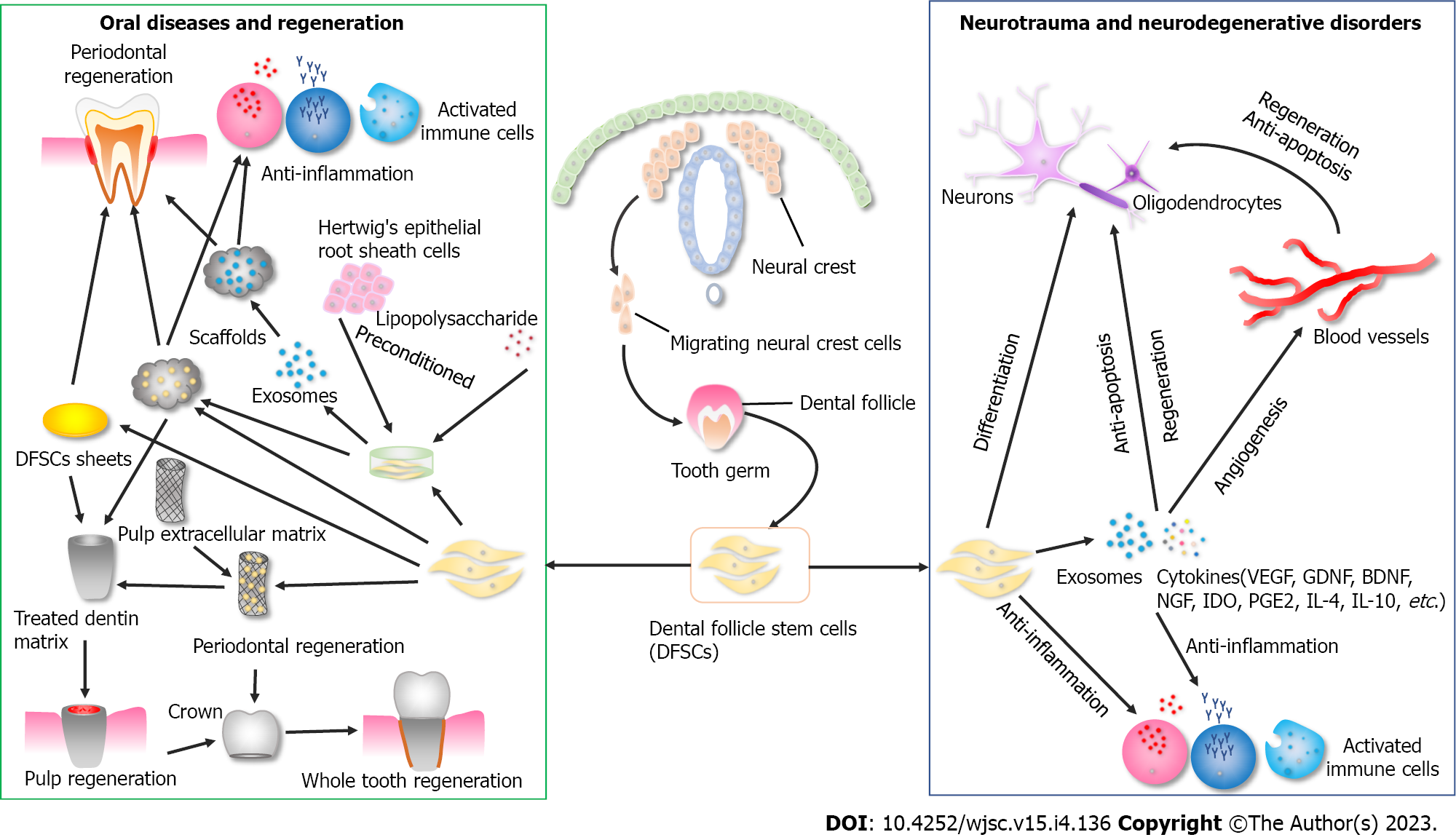Copyright
©The Author(s) 2023.
World J Stem Cells. Apr 26, 2023; 15(4): 136-149
Published online Apr 26, 2023. doi: 10.4252/wjsc.v15.i4.136
Published online Apr 26, 2023. doi: 10.4252/wjsc.v15.i4.136
Figure 2 The origin of dental follicle stem cells and the main strategies/mechanisms of dental follicle stem cell-based therapies in oral and neurological diseases.
Dental follicle stem cells (DFSCs) originating from the craniofacial neural crest exhibit dental-like tissue differentiation potential and neuro-ectodermal features. For the regeneration of periodontium and pulp, the main strategy is the combination of DFSCs or their accessory products (exosomes) with various scaffolds (such as treated dentin matrix, native dental pulp extracellular matrix, and hydroxyapatite). The cell sheet technique prevents the degradation of the extracellular matrix and makes it a natural scaffold. In addition, appropriate stimulation may enhance the therapeutic effect, such as preconditioning with Hertwig’s epithelial root sheath cells or lipopolysaccharides. For the treatment of neurotrauma and neurodegenerative disorders, DFSCs enable tissue regeneration primarily by reducing inflammatory response and apoptosis, promoting angiogenesis, and differentiating into mature functional neurons and oligodendrocytes.
- Citation: Yang C, Du XY, Luo W. Clinical application prospects and transformation value of dental follicle stem cells in oral and neurological diseases. World J Stem Cells 2023; 15(4): 136-149
- URL: https://www.wjgnet.com/1948-0210/full/v15/i4/136.htm
- DOI: https://dx.doi.org/10.4252/wjsc.v15.i4.136









